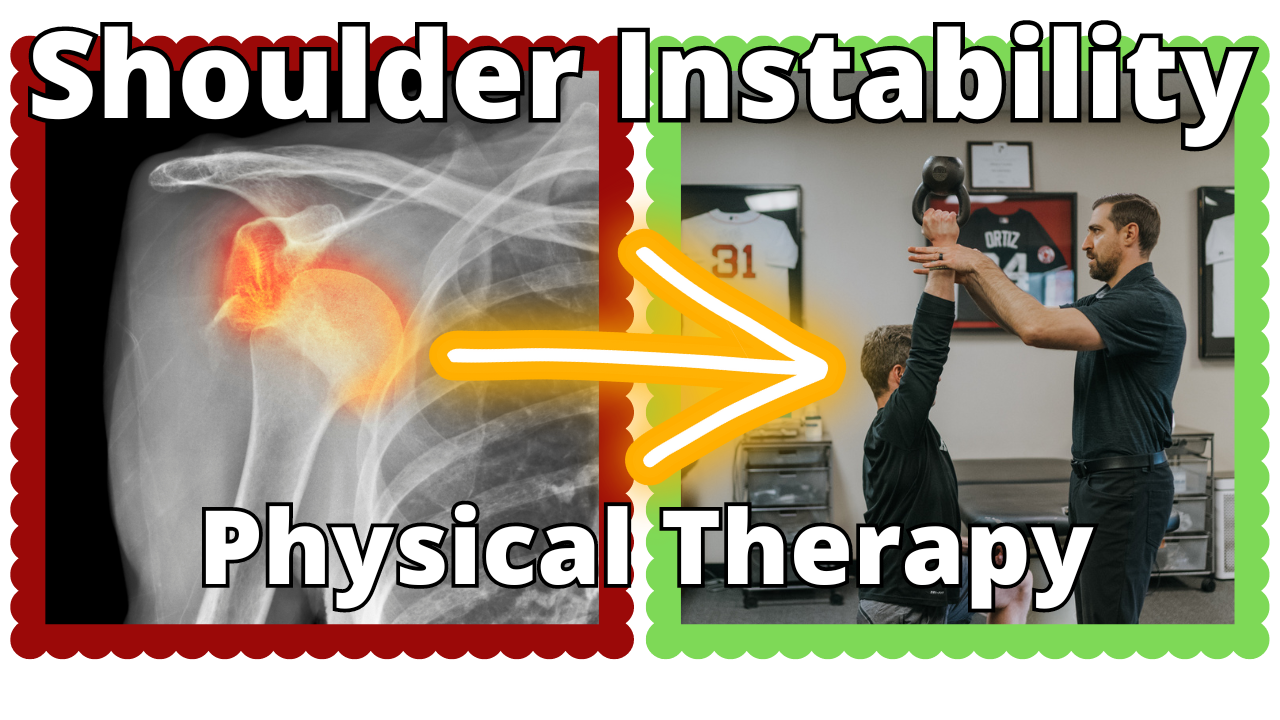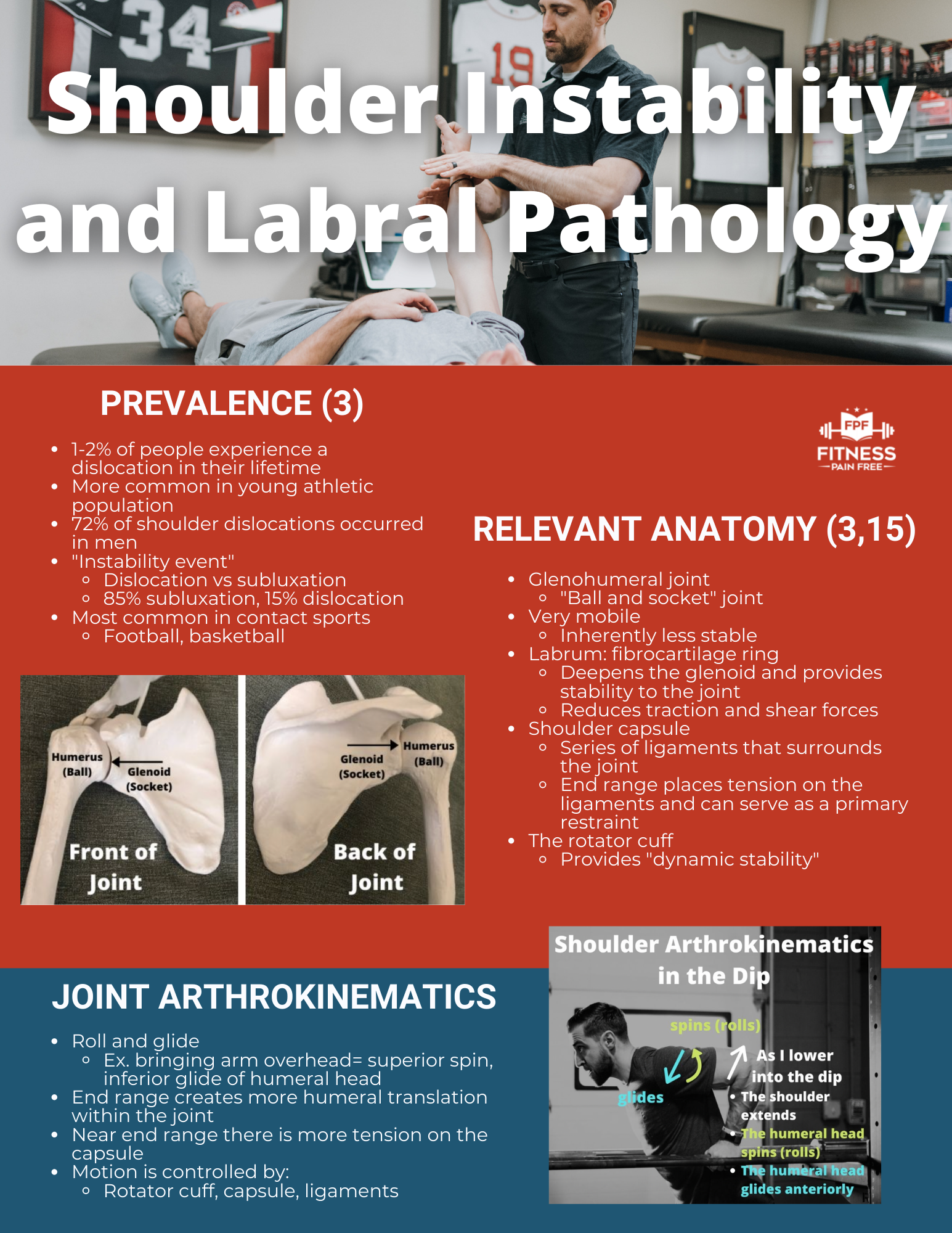
What Physical Therapists Need to Know about Shoulder Instability: FPF Show Episode 125
To go along with today's episode I have a nice infographic to share...
Sign up to receive FREE: Shoulder Instability and Labral Pathology - The Evidence Based Cheat Sheet
Click HERE to Download FREE
Grab the rest of the Mini Course and Sign up for the Certification Pre-sale list:
- FPF Mini Course - 7 Reasons Why Injuries Happen in the Gym and What to do About it
- The Fitness Pain Free Certification
In today's video we go over What Physical Therapists Need to Know about Shoulder Instability: FPF Show Episode 125:
- 0:00 Introduction
- 2:24 What is the definition of "shoulder instability"
- 3:06 What's the difference between shoulder subluxation and dislocation?
- 6:20 How common are shoulder instability events? Who is most at risk?
- 7:33 How common are subluxations vs. dislocations?
- 8:08 How common are shoulder dislocations in contact sports? (Rugby)
- 8:54 How common are frequent dislocations after a primary dislocation?
- 11:55 What are the different types of shoulder instability?
- 15:47 How to differentiate between different types of instability (mechanism of injury)
- 24:35 How common are bankart tears and hillsachs lesions after an anterior shoulder dislocation?
- 25:15 How common is shoulder instability in older individuals vs. younger individuals and why?
- 26:37 Does shoulder instability with recurrence correlate when eventual osteoarthritis in patients?
- 27:40 Should patients consider surgery after a shoulder dislocation with a bankart tear of the labrum?
- 30:26 AMBRI - Multi-direction Instability (MDI) defined
- 31:49 AIOS - Acquired instability overuse syndrome defined
- 37:32 Multi-direction Instability Case Study in a CrossFit (TM) athlete
I feel so unstable...
- Dan Pope DPT,OCS,CSCS
Show Notes / Relevant Articles:
Want to support me and decide topics for future episodes? Click HERE to sign up for FPF "Insiders" for just a dollar. You'll gain access to 100+ webinars, e-books and complete guides. Plus, you'll get private access to the "Insiders" Facebook group where you can have all of your questions answered by me.
Looking for other ways to support me that are 100% free?
- Like, comment and share on youtube, facebook and instagram
- Leave a 5-star review on apple podcasts
Thank you!
Dan Pope DPT, OCS, CSCS
References:
Varacallo M, Musto MA, Mair SD. Anterior Shoulder Instability. 2023 Aug 4. In: StatPearls [Internet]. Treasure Island (FL): StatPearls Publishing; 2024 Jan–. PMID: 30855822.
Wilk KE, Macrina LC, Reinold MM. Non-operative rehabilitation for traumatic and atraumatic glenohumeral instability. N Am J Sports Phys Ther. 2006 Feb;1(1):16-31. PMID: 21522197; PMCID: PMC2953282.
Owens BD, Duffey ML, Nelson BJ, DeBerardino TM, Taylor DC, Mountcastle SB. The incidence and characteristics of shoulder instability at the United States Military Academy. Am J Sports Med. 2007 Jul;35(7):1168-73. doi: 10.1177/0363546506295179. PMID: 17581976.
Kawasaki T, Ota C, Urayama S, Maki N, Nagayama M, Kaketa T, Takazawa Y, Kaneko K. Incidence of and risk factors for traumatic anterior shoulder dislocation: an epidemiologic study in high-school rugby players. J Shoulder Elbow Surg. 2014 Nov;23(11):1624-30. doi: 10.1016/j.jse.2014.05.007. Epub 2014 Jul 10. PMID: 25017313.

